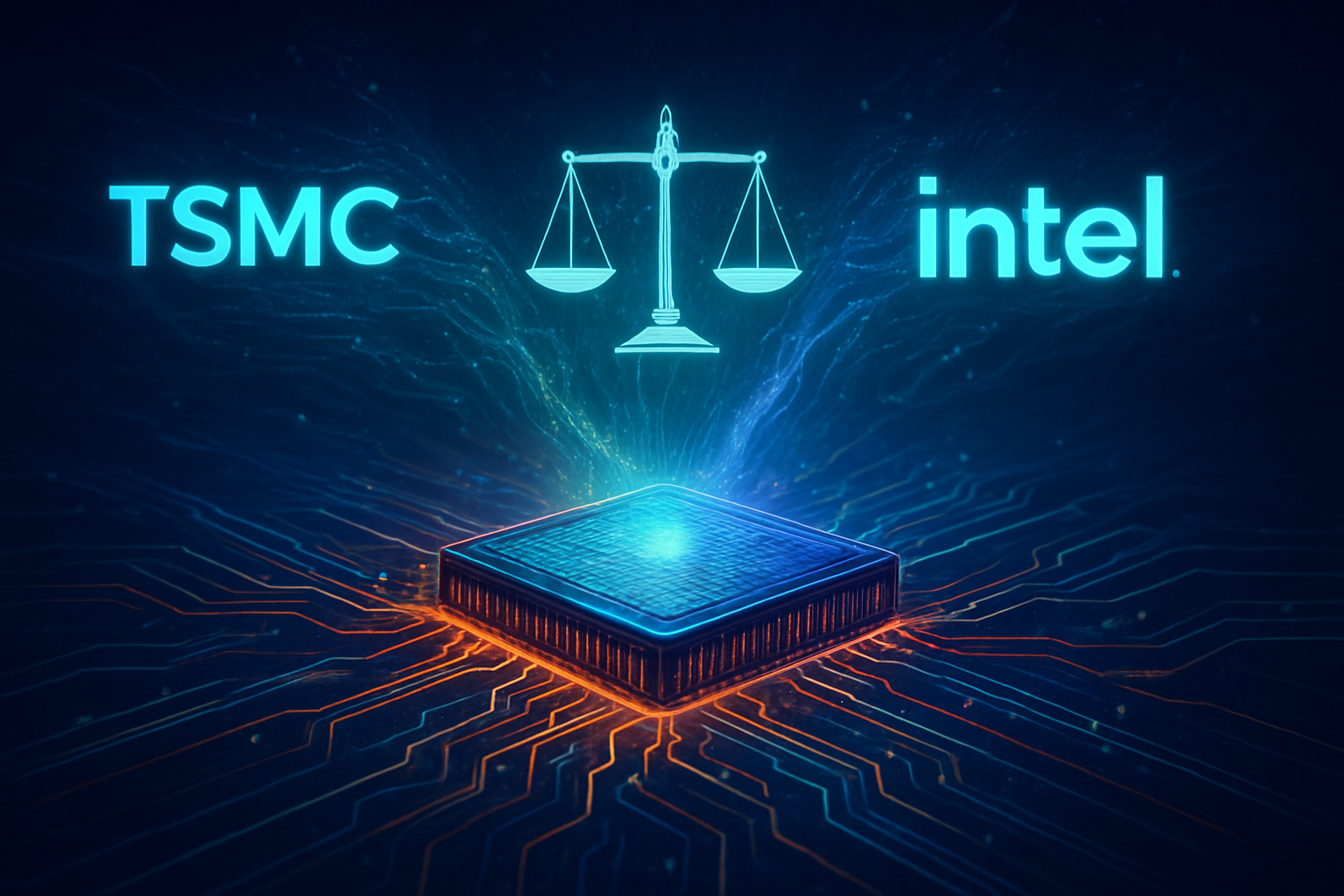New York, NY – December 1, 2025 – ACM Research Inc. (NASDAQ: ACMR), a global leader in advanced wafer and panel processing solutions, is poised to make a significant impact at the upcoming 14th Annual NYC Summit, scheduled for December 16, 2025. This highly anticipated invite-only investor conference will serve as a pivotal platform for ACM Research to amplify its industry visibility, cultivate new strategic partnerships, and solidify its commanding position within the rapidly evolving semiconductor manufacturing landscape. The company's participation underscores the critical importance of direct engagement with the financial community and industry leaders for specialized equipment suppliers in today's dynamic tech environment.
The summit presents a crucial opportunity for ACM Research to showcase its latest innovations and articulate its growth trajectory to a discerning audience of global tech, startup, and venture leaders. As the semiconductor industry continues its relentless drive towards miniaturization and higher performance, the role of advanced processing solutions becomes ever more critical. ACM Research's strategic presence at such a high-profile event highlights its commitment to maintaining technological leadership and expanding its global footprint.
Pushing the Boundaries of Wafer and Panel Processing
ACM Research Inc. has distinguished itself through its comprehensive suite of wet processing and plating tools, which are indispensable for next-generation chiplet integration and advanced packaging applications. Their technological prowess is evident in their key offerings, which include sophisticated wet cleaning equipment such as the Ultra C SAPS II and V, Ultra C TEBO II and V, and the Ultra-C Tahoe wafer cleaning tools. These systems are engineered for front-end production processes, delivering unparalleled defect removal and enabling advanced cleaning protocols with significantly reduced chemical consumption, thereby addressing both performance and environmental considerations.
Beyond traditional wafer processing, ACM Research is at the vanguard of innovation in advanced packaging. The company's portfolio extends to a range of specialized tools including coaters, developers, photoresist strippers, scrubbers, wet etchers, and copper-plating tools. A particular area of focus and differentiation lies in their contributions to panel-level packaging (PLP). ACM Research's new Ultra ECP ap-p Horizontal Plating tool, Ultra C vac-p Flux Cleaning tool, and Ultra C bev-p Bevel Etching Tool are revolutionary, offering the capability to achieve sub-micron features on square panels. This advancement is especially crucial for the burgeoning demands of AI chip manufacturing, including high-performance GPUs and high-density high bandwidth memory (HBM), where precision and efficiency are paramount. These innovations set ACM Research apart by providing solutions that are not only technically superior but also directly address the most pressing needs of advanced semiconductor fabrication. Initial reactions from the industry experts suggest that ACM Research's continuous innovation in these critical areas positions them as a key enabler for the next generation of AI and high-performance computing hardware.
Strategic Implications for the Semiconductor Ecosystem
ACM Research Inc.'s robust participation in events like the NYC Summit carries significant implications for AI companies, tech giants, and burgeoning startups across the semiconductor value chain. Companies heavily invested in AI development, such as Nvidia (NASDAQ: NVDA), Intel (NASDAQ: INTC), and AMD (NASDAQ: AMD), which rely on cutting-edge chip manufacturing, stand to directly benefit from ACM Research's advancements. Their ability to provide superior wafer and panel processing solutions directly impacts the efficiency, yield, and ultimately, the cost of producing the complex chips that power AI.
The competitive landscape for semiconductor equipment suppliers is intense, with major players like Applied Materials (NASDAQ: AMAT) and Lam Research (NASDAQ: LRCX) vying for market share. ACM Research's consistent innovation and strategic visibility at investor conferences help them to carve out and expand their niche, particularly in specialized wet processing and advanced packaging. Their focus on areas like panel-level packaging for AI chips offers a distinct competitive advantage, potentially disrupting existing product lines that may not be as optimized for these emerging requirements. By showcasing their technological edge and financial performance, ACM Research strengthens its market positioning, making it an increasingly attractive partner for chip manufacturers looking to future-proof their production capabilities. This strategic advantage allows them to influence design choices and manufacturing processes, further embedding their solutions into the core of next-generation semiconductor fabrication.
Broader Significance and Industry Trends
ACM Research's engagement at the NYC Summit highlights a broader trend within the semiconductor industry: the increasing importance of specialized equipment suppliers in driving innovation. As chip designs become more intricate and manufacturing processes more demanding, the expertise of companies like ACM Research becomes indispensable. Their advancements in wet processing and advanced packaging directly contribute to overcoming fundamental physical limitations in chip design and production, fitting perfectly into the overarching industry trend towards heterogeneous integration and chiplet architectures.
The impact extends beyond mere technical capabilities. High industry visibility for specialized suppliers is critical for attracting the necessary capital for continuous R&D, fostering strategic collaborations, and navigating complex global supply chains. In an era marked by geopolitical shifts and an intensified focus on semiconductor independence, strong partnerships between equipment suppliers and chip manufacturers are vital for bolstering national technological capabilities and supply chain resilience. Potential concerns, however, include the intense capital expenditure required for R&D in this sector and the rapid pace of technological obsolescence. Compared to previous AI milestones, where breakthroughs often focused on algorithms or software, the current emphasis on hardware enablers like those provided by ACM Research signifies a maturing industry where physical limitations are now a primary bottleneck for further AI advancement.
Envisioning Future Developments
Looking ahead, the semiconductor industry is on the cusp of transformative changes, with AI, IoT, and autonomous vehicles driving unprecedented demand for advanced chips. ACM Research is well-positioned to capitalize on these trends. Near-term developments are likely to see continued refinement and expansion of their existing wet processing and advanced packaging solutions, with an emphasis on even greater precision, efficiency, and sustainability. The company's ongoing expansion, including the development of an R&D facility in Oregon, signals a commitment to accelerating new customer initiatives and pushing the boundaries of what's possible in semiconductor manufacturing.
Longer-term, experts predict a growing reliance on novel materials and manufacturing techniques to overcome the limitations of silicon. ACM Research's expertise in wet processing could prove crucial in adapting to these new material science challenges. Potential applications and use cases on the horizon include ultra-low power AI accelerators, neuromorphic computing hardware, and advanced quantum computing components, all of which will demand highly specialized and precise fabrication processes. Challenges that need to be addressed include the escalating costs of developing next-generation tools, the need for a highly skilled workforce, and navigating intellectual property landscapes. Experts predict that companies like ACM Research, which can innovate rapidly and form strong strategic alliances, will be the key architects of the future digital economy.
A Crucial Juncture for Semiconductor Innovation
ACM Research Inc.'s participation in the 14th Annual NYC Summit 2025 is more than just a corporate appearance; it's a strategic declaration of intent and a testament to the company's pivotal role in the global semiconductor ecosystem. The key takeaway is the undeniable importance of specialized equipment suppliers in driving the fundamental advancements that underpin the entire tech industry, particularly the explosive growth of artificial intelligence. By showcasing their cutting-edge wafer and panel processing solutions, ACM Research reinforces its position as an indispensable partner for chip manufacturers navigating the complexities of next-generation fabrication.
This development holds significant historical importance in AI, as it underscores the shift from purely software-driven innovation to a renewed focus on hardware enablement as a bottleneck and a critical area for breakthrough. The ability to produce more powerful, efficient, and cost-effective AI chips hinges directly on the capabilities provided by companies like ACM Research. The long-term impact will be felt across all sectors reliant on advanced computing, from data centers to consumer electronics. In the coming weeks and months, industry watchers should closely monitor the partnerships and investment announcements stemming from the NYC Summit, as these will likely shape the trajectory of semiconductor manufacturing and, by extension, the future of AI.
This content is intended for informational purposes only and represents analysis of current AI developments.
TokenRing AI delivers enterprise-grade solutions for multi-agent AI workflow orchestration, AI-powered development tools, and seamless remote collaboration platforms.
For more information, visit https://www.tokenring.ai/.








